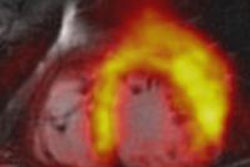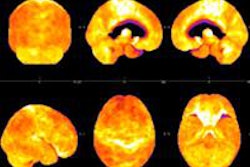Two studies published in the January issue of the Journal of Nuclear Medicine have shown promising results for newly developed radiopharmaceuticals with benzamide for patients with metastasized melanoma.
In one study from France, 87 patients with a total of 86 metastatic lesions were imaged with both FDG-PET/CT and iodine-123 N-(2-diethylaminoethyl)-2-iodobenzamide (I-123 BZA2) SPECT to compare accuracy in staging and restaging (JNM, Vol. 51:1, pp. 15-22).
I-123 BZA2 is a benzamide derivative that binds melanin pigment in melanoma cells, according to the study authors.
Sensitivity for the diagnosis of melanoma metastases was 80% with FDG imaging, compared with 23% for I-123 BZA2. However, specificity was 54% with FDG and 86% with I-123 BZA2. The sensitivity and specificity of I-123 BZA2 for diagnosing melanin-positive lesions were 75% and 70%, respectively.
The results showed that I-123 BZA2 tumor accumulation correlated with the melanin content of the melanoma metastases, indicating that I-123 BZA2 could be used to diagnose metastases, said lead author Dr. Florent Cachin, PhD, from Jean Perrin Cancer Center. However, given its low sensitivity, I-123 BZA2 should not be used for staging.
In a second study (JNM, pp. 9-14), researchers used a melanin-binding benzamide first to identify patients for therapy and then as a therapeutic radiopharmaceutical. A total of 26 patients were imaged with I-123 BA52 to identify those who might benefit from therapy, and nine patients were selected for therapy with I-131 BA52.
Some of the patients treated with I-131 BA52 had a survival rate of more than two years, according to co-author Dr. Uwe Haberkorn, from University Hospital Heidelberg, and colleagues. In addition, they believe that higher treatment doses would have been tolerated in these patients, as only moderate side effects were observed.
The tracer could be useful for combination therapy in patients with metastasized melanoma, especially in earlier stages of the disease when melanin production is higher, Haberkorn said.




















